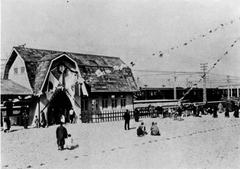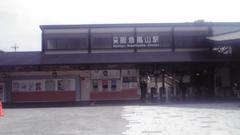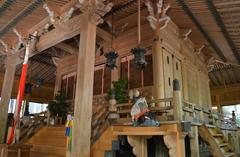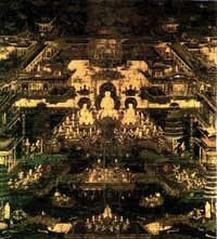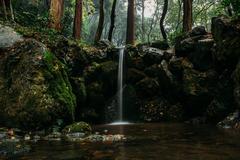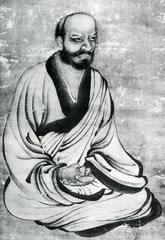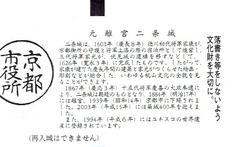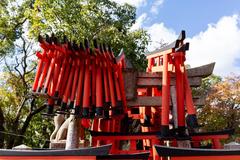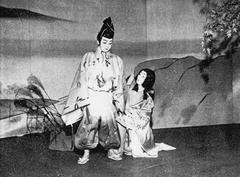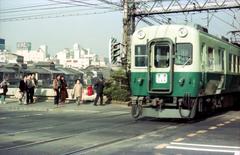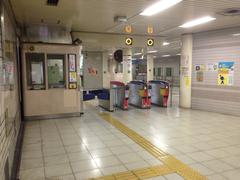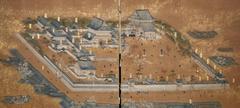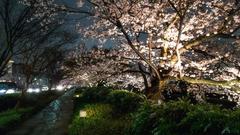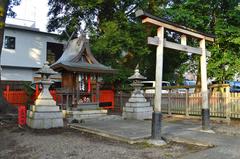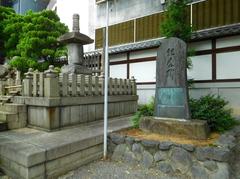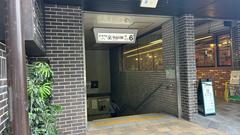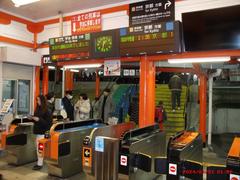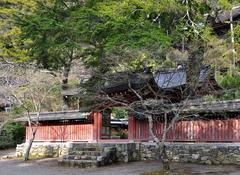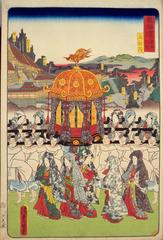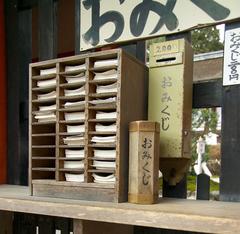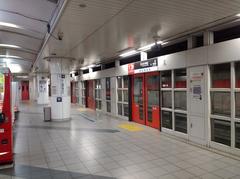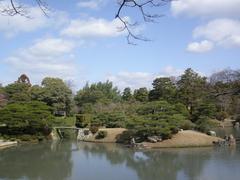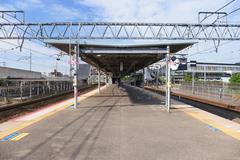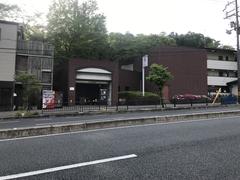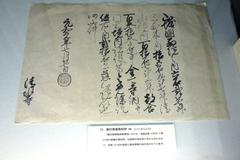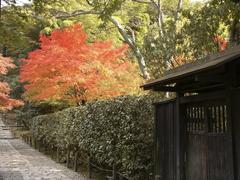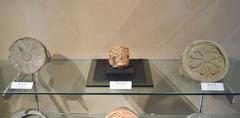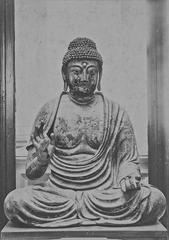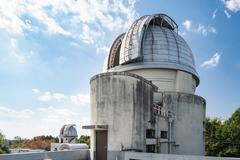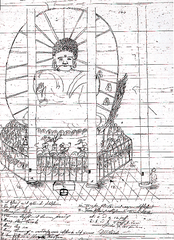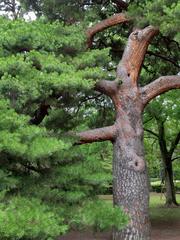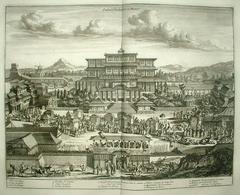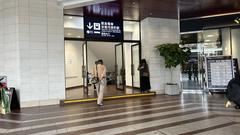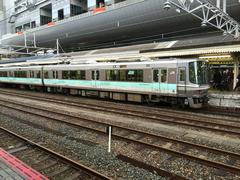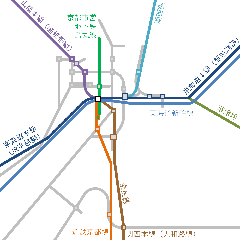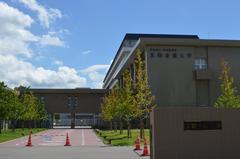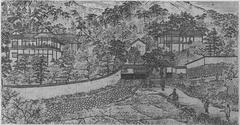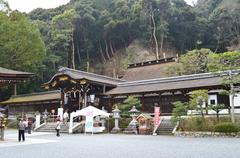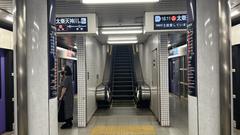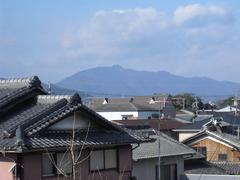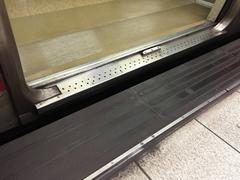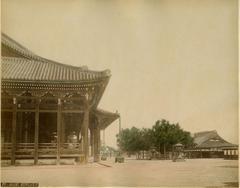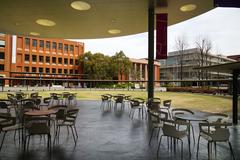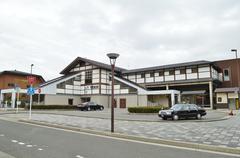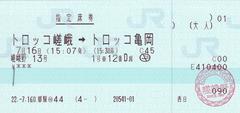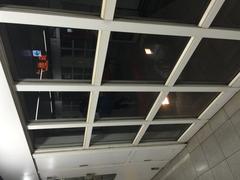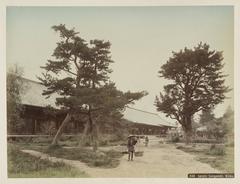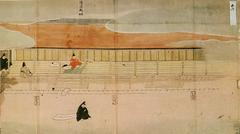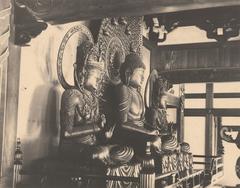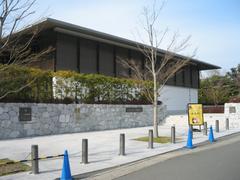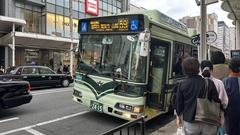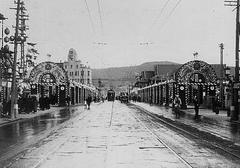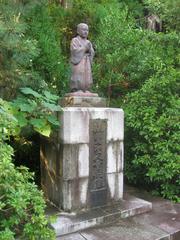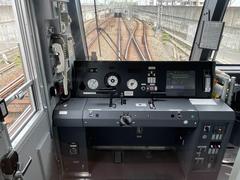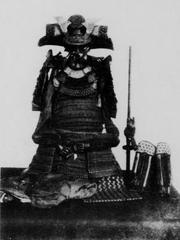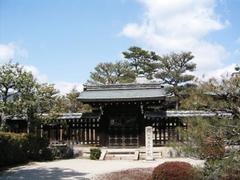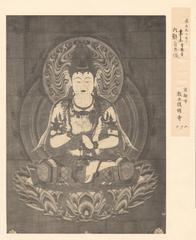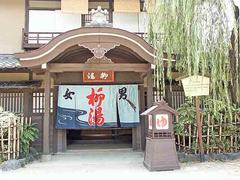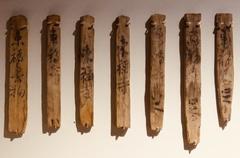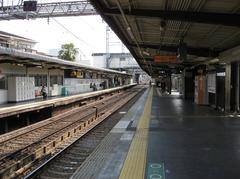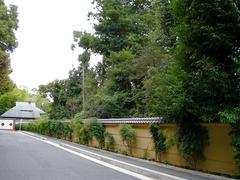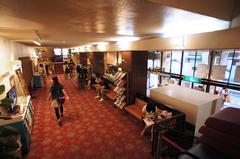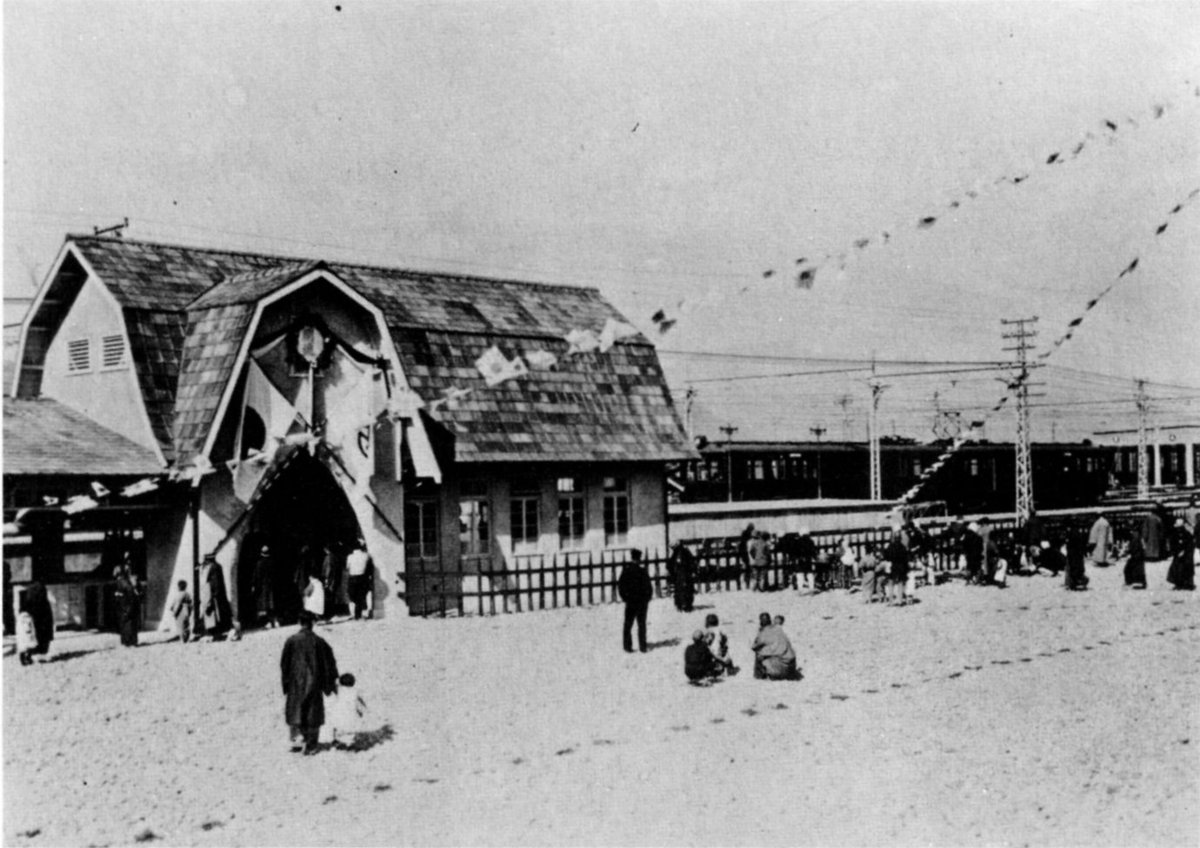
Katsura Station Kyoto: Visiting Hours, Tickets, and Comprehensive Travel Guide
Date: 15/06/2025
Introduction: The Gateway to Kyoto’s Western Heritage
Katsura Station, located in Kyoto’s Nishikyō-ku district, is far more than a transit point—it is a vital gateway to some of Japan’s most revered historical and architectural sites, notably the celebrated Katsura Imperial Villa. Since opening in 1928, Katsura Station has played a key role in Kyoto’s urban expansion and continues to be a crucial transportation hub, offering seamless links to the city center, Osaka, and the scenic Arashiyama district. The station’s thoughtful modernization, accessibility features, and proximity to cultural treasures make it an essential starting point for exploring western Kyoto.
This detailed guide covers everything you need to know for a rewarding visit, including:
- Station operating hours and ticketing
- Access and guided tours for Katsura Imperial Villa
- Local transport options and connections
- Nearby attractions (Arashiyama Bamboo Grove, Tenryū-ji Temple, Okochi Sanso Villa, and more)
- Accessibility and travel tips
- FAQs and practical advice for a smooth experience
For further information, consult resources like Inside Kyoto, Kyoto Station Guide, and Artisans of Leisure.
Table of Contents
- Introduction
- Historical Background and Strategic Importance
- Visiting Hours and Ticketing
- Architectural Evolution and Modernization
- Station Facilities and Accessibility
- Key Role in Cultural Tourism
- Transportation and Getting Around
- Nearby Attractions
- Impact on Local Economy and Community
- Visitor Tips and Etiquette
- Frequently Asked Questions (FAQ)
- Conclusion and Resources
Historical Background and Strategic Importance
Katsura Station was established in 1928 as part of the Hankyu Kyoto Main Line, positioned about 4.5 kilometers west of Kyoto Station. Its strategic location supported suburban development, linking Kyoto’s city center with residential areas and neighboring Osaka. The station’s evolution marked a shift from rural farmland to a dynamic community, facilitating access to key cultural landmarks like the Katsura Imperial Villa (Inside Kyoto).
Visiting Hours and Ticketing
Katsura Station
- Operating Hours: Train services run from approximately 5:00 AM to midnight daily. Ticket counters and automated machines are available from early morning until the last train.
- Train Tickets: Purchase at automated machines or ticket counters; IC cards (ICOCA, Suica, PiTaPa) are accepted.
Katsura Imperial Villa
- Location: About a 10–15 minute walk (600 meters) or a 3-minute bus ride from Katsura Station.
- Visiting Hours: Tuesday–Sunday, 9:00 AM to 5:00 PM (last entry around 4:30 PM). Closed Mondays (or the following day if Monday is a public holiday) and during the New Year period.
- Admission: Advance reservations are mandatory. Tickets (1,000–1,300 yen/person) must be booked via the Imperial Household Agency’s website or office; no on-site sales. Payment is accepted via cash, credit card, or e-money.
- Guided Tours: All visits are via guided group tours (approx. 75 minutes, Japanese and English), preserving the site’s integrity.
Architectural Evolution and Modernization
Katsura Station began as a simple wooden building but has undergone multiple renovations to accommodate growing passenger numbers and modern needs. Upgrades include automated ticket gates, barrier-free access (elevators, ramps, tactile paving), expanded concourses, and multilingual signage. The design reflects Kyoto’s traditional aesthetics, harmonizing modernity with heritage (Inside Kyoto).
Station Facilities and Accessibility
- Barrier-Free Access: Elevators, ramps, tactile paving, accessible restrooms, and wide fare gates.
- Multilingual Support: Signs and announcements in Japanese, English, Chinese, and Korean.
- Tourist Information: Staffed counters and digital kiosks provide maps, brochures, and assistance.
- Passenger Amenities: Coin lockers, clean waiting areas, shops, convenience stores, and ATMs.
- Dining & Shopping: The Hankyu Mew shopping complex offers a range of dining options (fast food, cafes, restaurants), retail stores, beauty salons, and more.
- Wi-Fi: Free KYOTO Wi-Fi available throughout the station.
Key Role in Cultural Tourism
Katsura Station is the primary access point for the Katsura Imperial Villa—a national treasure renowned for its architectural and landscape artistry (Archeyes). The station’s proximity is essential for scholars, architecture enthusiasts, and tourists, as villa tours are strictly by advance reservation and guided group.
As a transfer hub for the Hankyu Arashiyama Line, Katsura Station also connects visitors to the scenic Arashiyama district, famous for its bamboo groves, UNESCO World Heritage temples, and panoramic river views (Artisans of Leisure).
Transportation and Getting Around
Hankyu Railway Lines
- Hankyu Kyoto Main Line: Connects Katsura to Kyoto-Kawaramachi (10–12 min) and Osaka-Umeda (40 min). Not covered by the Japan Rail Pass (Kyoto Station Guide).
- Hankyu Arashiyama Line: Direct transfer at Katsura Station; trains every 10–15 min to Arashiyama (7 min ride).
Bus Connections
- City Bus 33, Keihan Kotsu Bus 14, Bus 2: From the east exit, reach Katsura Imperial Villa in about 3 minutes (Matcha-JP).
- Other Bus Lines: Connect to Nijo Station, Kyoto Station, and western Kyoto neighborhoods.
Subway Access
- From Kyoto Station, take the Karasuma Subway Line to Shijo Station, then transfer (underground) to Hankyu Karasuma Station for the Kyoto Line.
Bicycle and Taxi
- Bicycle Parking: Paid and city-operated lots near the station.
- Taxi Stand: Located at the south exit.
Nearby Attractions
- Katsura Imperial Villa: Advance reservation required; 10–15-minute walk or short bus ride.
- Arashiyama Bamboo Grove: Accessible via Hankyu Arashiyama Line; one of Kyoto’s most iconic sights.
- Tenryū-ji Temple: A UNESCO World Heritage Site with famous Zen gardens.
- Okochi Sanso Villa: Historic villa with beautiful gardens and panoramic views.
- Jizo-ji Temple: A site on the Six Jizo pilgrimage.
- Kyoto Railway Museum & Katsura River Parks: Accessible by bus or short walk.
Impact on Local Economy and Community
Katsura Station supports a thriving local economy, with shops, restaurants, and hotels benefiting from commuter and tourist traffic. Seasonal surges during cherry blossom and autumn foliage periods boost business for local vendors. Community initiatives focus on cultural preservation, etiquette education, and sustainable tourism.
Visitor Tips and Etiquette
- Reserve Villa Tours Early: Same-day slots are rare; book in advance (TravelCaffeine).
- Visit During Off-Peak: Early mornings or weekday afternoons are less crowded.
- Respect Etiquette: Observe photography restrictions and site rules at historical locations.
- Use Digital Resources: Apps like Jorudan or Navitime provide real-time train/bus schedules (Kyoto Station Guide).
- Accessibility: The station and villa offer barrier-free features, but check for terrain limitations at the villa and arrange assistance if needed.
Frequently Asked Questions (FAQ)
Q: What are Katsura Station’s operating hours?
A: The station operates from approximately 5:00 AM to midnight daily.
Q: How do I reserve tickets for Katsura Imperial Villa?
A: Reserve in advance via the Imperial Household Agency website; tickets are not sold on-site.
Q: Is the station accessible for travelers with disabilities?
A: Yes, with elevators, ramps, tactile paving, and accessible restrooms.
Q: How do I get to Arashiyama from Katsura Station?
A: Transfer to the Hankyu Arashiyama Line; trains depart every 10–15 minutes.
Q: Can I store luggage at Katsura Station?
A: Coin lockers are available near the concourse.
Q: Are there dining and shopping options at the station?
A: Yes, the Hankyu Mew complex offers a variety of eateries and shops.
Conclusion and Resources
Katsura Station is your essential gateway to Kyoto’s western cultural treasures, blending heritage with convenience and modern amenities. Advance planning is vital for visiting the Katsura Imperial Villa, and the station’s excellent transport connections make it ideal for day trips to Arashiyama, Osaka, and beyond.
For up-to-date information, downloadable maps, and personalized travel guides, download the Audiala app, and explore these authoritative resources for your journey:
Images and Maps:
- [Photo: Katsura Station entrance, Kyoto]
- [Map: Katsura Station and surrounding cultural sites]
- [Virtual tour: Katsura Imperial Villa gardens]
For ongoing travel tips and exclusive Kyoto content, follow us on social media and stay connected with the Audiala app.
